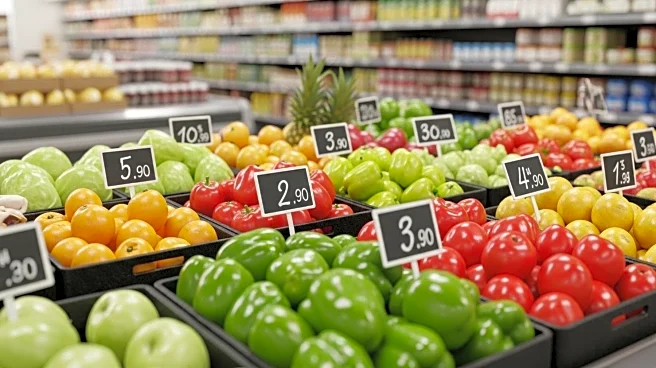What is the story about?
What's Happening?
The Federal Reserve is grappling with inflation rates that have surpassed its 2% target, driven by significant price increases in tariff-sensitive goods. According to a Bureau of Labor Statistics report, the 'food at home' category experienced its largest monthly gain since August 2022, with notable price hikes in items such as roasted coffee, uncooked beef steaks, and eggs. Additionally, prices for apparel, audio products, motor parts, furniture, and new cars have also risen. The energy sector saw a 0.7% price increase. These developments come amid a softening labor market, with jobless claims reaching their highest level since October 2021 and minimal net job growth reported this year. The situation is further complicated by regional disparities in inflation, with cities like Tampa, San Diego, and Philadelphia experiencing the highest rates.
Why It's Important?
The rising inflation poses a significant challenge for the Federal Reserve as it considers its monetary policy options. With inflation exceeding the target, the Fed faces pressure to adjust interest rates, which could have wide-ranging implications for the U.S. economy. Higher inflation can erode purchasing power and affect consumer spending, potentially slowing economic growth. Businesses may face increased costs, impacting profitability and investment decisions. The situation also highlights the impact of tariffs on consumer prices, raising questions about trade policies and their economic consequences. Stakeholders, including policymakers and businesses, must navigate these complexities to mitigate adverse effects on the economy.
What's Next?
The Federal Reserve is expected to make critical decisions regarding interest rates in response to the inflationary pressures. According to the CME Group's FedWatch tool, there is growing speculation that the Fed may cut rates in the near future, with potential further reductions later in the year. These decisions will be closely monitored by financial markets and economic stakeholders, as they could influence economic stability and growth prospects. Additionally, the ongoing impact of tariffs on prices may prompt discussions on trade policy adjustments to alleviate inflationary pressures.
AI Generated Content
Do you find this article useful?















